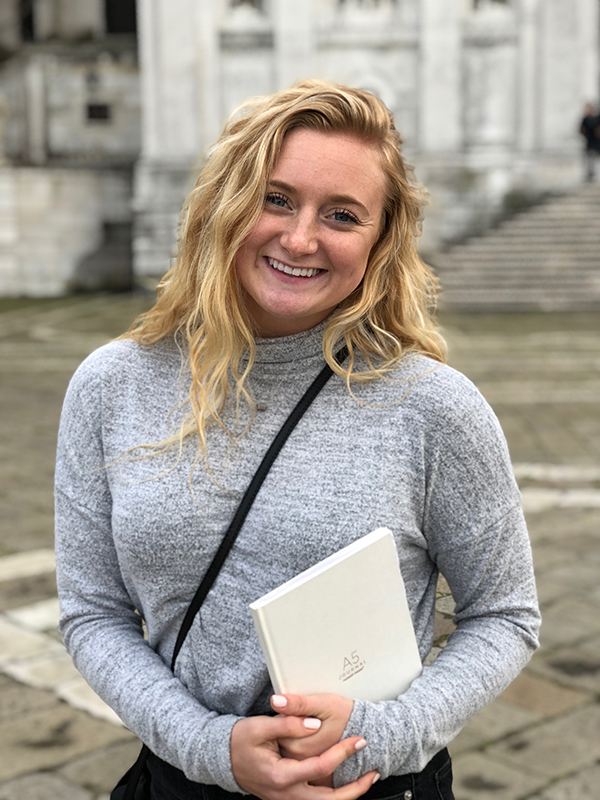
Annie Vitale in front of the Basilica of Santa Maria della Salute. Annie will present her senior research paper on Friday, May 4, 2018.
Annie Vitale is an undergraduate Art History major and is currently working on her senior paper. She was awarded the Art History Department Undergraduate Research Grant to help make travel for this project possible.
This March I was blessed with the opportunity to travel to Venice, Italy after receiving grants from both the University of St. Thomas Department of Art History and the Undergraduate Research Opportunities Program. The purpose of my trip was to research and experience first hand the Basilica of Santa Maria della Salute, information which will sustain my senior research paper and will also be used to supplement the research used for my Summa Exam, which will allow me to graduate summa cum laude.
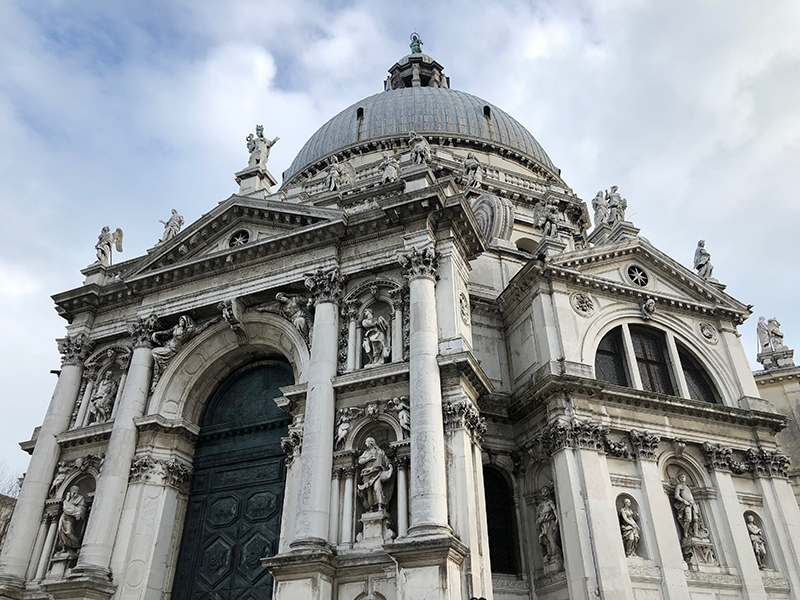
The exterior of Santa Maria della Salute
The focus of my senior thesis is the investigation of Santa Maria della Salute, a Baroque-style plague church designed by Baldassare Longhena, as not only a church but as a memorial to the Virgin Mary. Consecrated in 1632 in response to a plague epidemic that attacked Venice in 1630, the Venetians dedicated Salute to the Virgin Mary who they believed delivered their city from the plague. In my research I consider the church, its site, plan, interior and exterior elements, and function both contemporarily and historically, within the framework of memorial to the Virgin.
I had extensively researched Salute prior to my travel, however I believe a site cannot be completely understood without experiencing it in real life. The grants I received allowed me fully immerse myself in the architecture and ambiance of Salute.
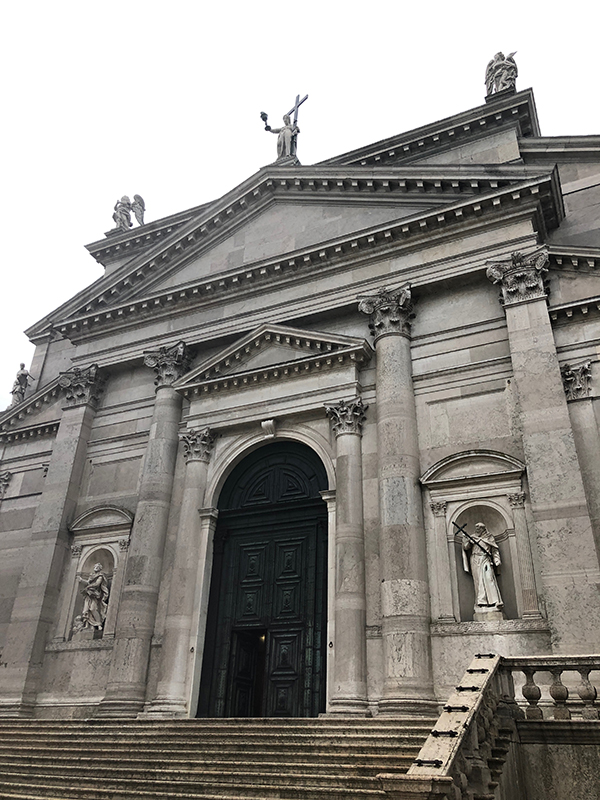
The facade of Il Redentore
While in Venice I spent a great deal of time on site at Salute, taking extensive notes and countless photos (luckily Salute allows photography!) as well as sketching architectural elements of the space and its surroundings. Although I had visited Salute once before in 2012, I was able to experience it in a whole new light after researching it for the past several months. As I approached Salute I stood in awe of the theatrical facade covered in marble statues of Mary and the saints. Once I entered I continued to be amazed by the six chapels surrounding the rotunda, each housing a stunning altar decorated with a painting of scenes from the life of the Virgin. But what captivated me the most was the dramatic altarpiece, a sculpture of Mary dispelling the plague, which holds the Panagia Messopanditissa, a Byzantine icon of the Madonna and Child. I was overwhelmed by all of the Marian symbolism, Longhena even designed Salute in the form of a rotunda to symbolize Mary’s womb. Observing all of these elements first hand allowed me to better comprehend how they connect both visually and symbolically to strengthen the presence of the Virgin Mary in the space.
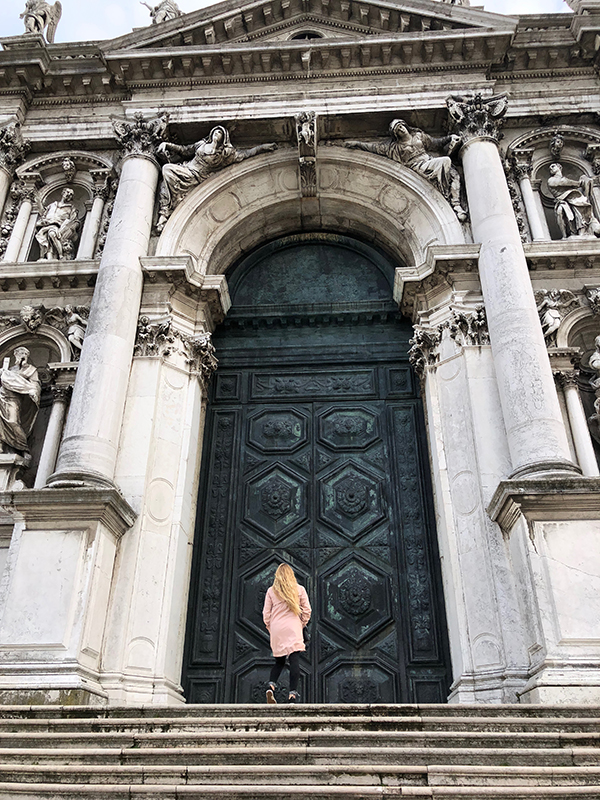
The facade of the Basilica of Santa Maria della Salute
I was able to attend a Sunday morning mass at Salute, as well as an evening organ concert. It was helpful to attend these events as they provided me with the opportunity to observe the how Longhena’s design fits the function of the space. I also visited the church’s Sacristy Museum which is home to gorgeous paintings and frescoes, some by Venetian painters Titian and Tintoretto (unfortunately the museum prohibits photography).
Visiting Venice allowed me to position Salute within the broader context of the city as I analyzed several other churches and important architectural works while I was there. I visited Il Redentore, a plague church dedicated to Christ the Redeemer, situated across the canal from Salute. I also visited Santa Maria Gloriosa dei Frari which houses some of the most impressive paintings sculptural works I have ever seen. It was helpful for me to visit these churches, among many others, as I compared them to Salute in an effort to determine exactly what aspects of Salute allow the church to function as a memorial.
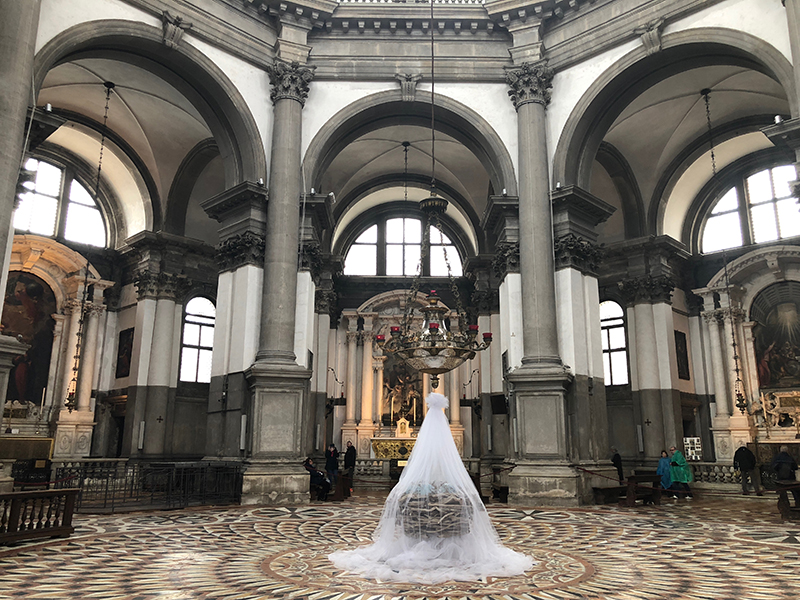
The interior rotunda of Salute
I was able to take a boat ride up the Grand Canal where I saw the impressive facades of Ca’ Pesaro and Ca’ Rezzonico, two Venetian palaces designed by Longhena. It was really neat to see these facades in person and compare them to Longhena’s facade design of Salute.
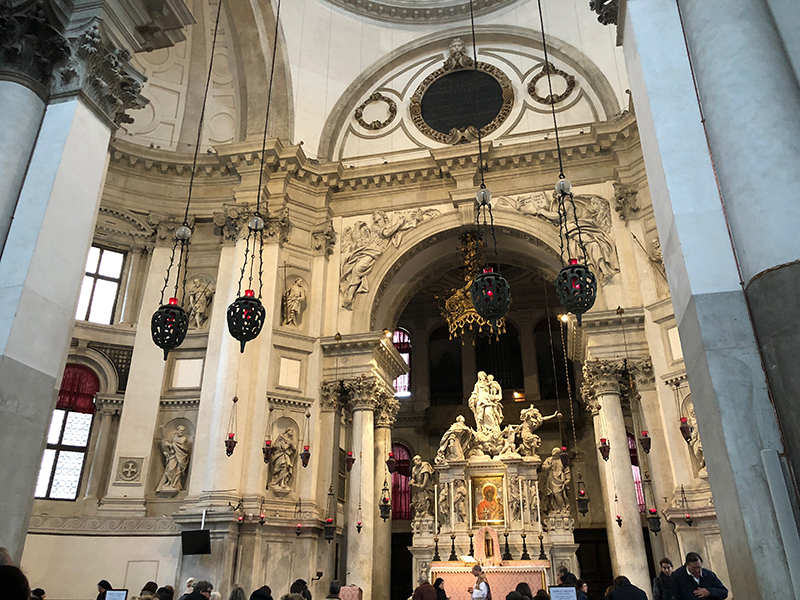
The sanctuary of Salute with the high altar of Mary dispelling the Plague
I was also able to spend a few days in Florence, experiencing the art, architecture, and culture there as well (not to mention some of the best pasta and pizza I have ever had). There I visited several churches including Santa Maria del Fiore, Orsanmichele, San Minito al Monte and Santa Maria Novella. It was interesting to observe how churches other than Salute portray the Virgin Mary and encourage devotion to her. I was particularly fascinated by Orsanmichele, which was originally built as a grain market and later converted into a church. Orsanmichele houses Bernardo Daddi’s Madonna and Child which is said to have miraculous powers, healing many during the outbreaks of the plague.
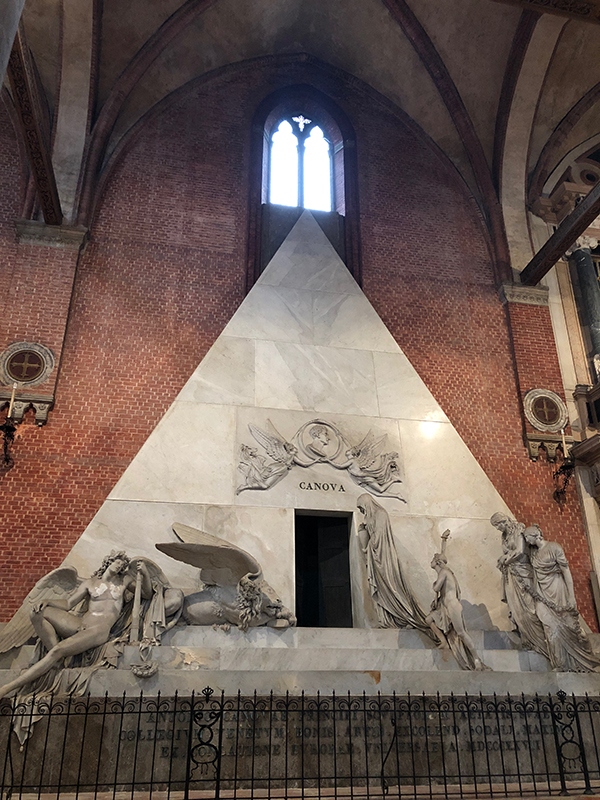
The tomb of Canova inside of Santa Maria Gloriosa
My trip to Italy was nothing less than remarkable and, in a way, makes me feel like I have come full circle, back to the place the peaked my interest in art history nearly seven years ago. In 2012 as a sophomore in high school I traveled to Venice on a school trip and Salute was the first church I visited. I distinctly remember being captivated by the theatrical facade and stunning interior. It was after this trip to Italy that I became passionately interested in pursuing art history. Returning to Salute now, as I am writing my senior paper, not only provided me with incredible material to incorporate into my research, but also reminded me why I pursued a major in art history in the first place. I am confident that my time spent in Venice will contribute greatly to the success of my projects and I am beyond grateful for the generosity from the University of St. Thomas Department of Art History and the Undergraduate Research Opportunities Program for making it a reality.